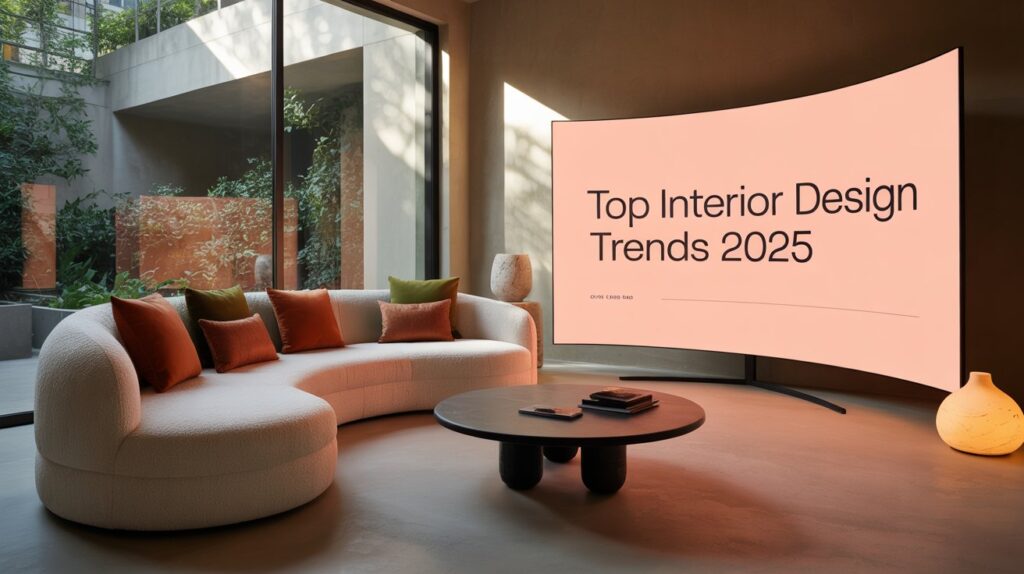People frequently associate new trends with fashion or technology. However, interior design is changing at the same rate, producing areas that represent new objectives, aesthetics, and lifestyles. Homes in 2025 are being redesigned. They reflect new ideas about sustainability, comfort, and individuality. This is similar to how online casino change to meet the needs of today’s gamers. This year’s design guidelines emphasize creating genuine and meaningful spaces. They focus less on following current trends.
1. Cozy Minimalism
Though its harsher, colder form has softened, minimalism is still very much alive. Cozy textures are combined with simple layouts and clean lines in the “warm minimalism” movement. Instead of dazzling white surfaces, consider warm woods, curved furniture edges, and muted colors combined with soft textiles. It’s about designing spaces that seem calm and inhabited-simple without being sterile.
2. Subtle Technology and Smart Homes
Although technology still has an impact on interior design, it now subtly permeates a space rather than taking center stage. Voice-activated lighting and hidden charging stations keep your home efficient. Appliances blend into cabinets, enhancing style without losing function. Harmony is the design objective for 2025: technology should simplify life without becoming obtrusive.
3. Dynamic Personalization
Many homeowners are seeking bold expression in their interior design after years of using muted color schemes. Art collections and handcrafted furnishings add depth and originality. Jewel tones like midnight blue and emerald green bring drama to walls. Instead of adhering to a template, the objective is now to design areas that reflect individual experiences and narratives. Every object, tint, and texture contributes to a greater story, making a home a reflection of its occupants.
4. The Standard of Ecological Responsibility
Sustainability is now expected in design, not just a fad. Homeowners are becoming more conscious of the effects of materials, such as the fabrics on their couches and the paint on the walls. Reclaimed wood, long-lasting pieces, and imaginatively upcycled objects are being preferred over transient substitutes. Even luxury firms are embracing this change as they realize that consumers value and require ecologically friendly production. By 2025, eco-friendly living has become a popular concern rather than a fringe concept.
5. Spaces with Multiple Functions
In 2025, the pandemic years continue to have a significant impact on how people use their homes. More homes need flexible spaces. For example, dividers offer privacy when needed. A guest room can serve as a gym. Even the kitchen table can act as an office. This trend is supported by clever furniture, such as mattresses with built-in storage, fold-out desks, and modular chairs.
6. Lighting Emotionally
One of the most effective methods to create a mood these days is through lighting design. Single overhead lights will be replaced by tiered lighting in 2025. To create various ambiances, homeowners are use a variety of LED strips, floor lamps, sconces, and natural light techniques. Particularly well-liked is warm, adjustable lighting, which provides versatility for everything from concentrated work to private meetings.
7. Surface Textures
Tactile experiences are replacing flat, homogeneous finishes. Handmade tiles, fabric-wrapped panels, ribbed wood, and plaster walls all provide depth and dimension. In addition to adding richness to a place, texture also softens the atmosphere, making big areas feel cozier and friendlier.
8. Handmade and Local Elements
Local artistry is becoming more important than mass-produced decor. Homeowners love items with a story. Things like pottery, handwoven rugs, and handcrafted furniture are especially valued. Supporting local craftspeople adds uniqueness and helps the house connect to a wider culture. These objects are often viewed as utilitarian art. This blend of practicality and beauty can be hard to separate.
9. Design with Wellness in Mind
In 2025, wellness will become more and more important to homes. Designers are incorporating it right into floor layouts and finishes rather than leaving it as an afterthought. Better sound insulation, aromatherapy diffusers, improved air systems, and quiet meditation areas are now typical in buildings. Creating homes that actively lower stress and encourage better routines is the goal, not luxury.
Beyond Fashion: Living Spaces
This year, it is noteworthy that interior design is not solely focused on novelty. Spaces that feel individualized, flexible, and healing are now more important. Smart technology works quietly in the background. Rooms feature sustainable choices and natural textures. When combined, they produce a timeless rather than contemporary blend of comfort and creativity.
2025 homes aren’t meant to be picture-perfect focal points. They are about sanctuaries that people live in. These spaces change with their owners. They support identity and foster well-being. To put it briefly, design is now more about how life feels within the walls of our homes than it is about aesthetics.

